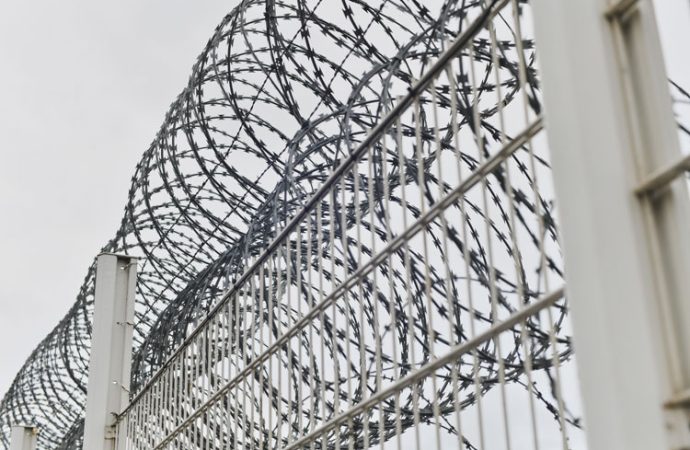Author Recent Posts Wajeeha Ashfaq Latest posts by Wajeeha Ashfaq (see all) Violations of International law by Israel in the ongoing conflict – November 2, 2023 Can BRICS replace G7 as a new international coalition? – September 26, 2023 Russia-Ukraine war poses threat to global food and energy security – September 15, 2023
The nearly two-decade-long “Afghan war” came to an end with the signing of a peace pact known as the “Doha Agreement” between the United States and the Afghan Taliban. The treaty was signed on February 29, 2020, following negotiations between both sides in Doha, Qatar. The Afghan government, led by Ashraf Ghani, was not involved in the negotiations, and the Taliban referred to it as a “puppet” to Western forces. The treaty was signed by US Special Representative for the Afghan Peace Process, Zalmay Khalilzad, and Taliban representative, Mullah Abdul Ghani Baradar. According to Watson Institute’s figures, the conflict ultimately cost $2.313 trillion and resulted in the deaths of up to 2,43,000 people. This does not include deaths caused by infections, food and water shortages, or any other consequence of war
The treaty is structured into three major sections, each of which contains some norms and obligations that the other party must obey. In the first phase, the Afghan Taliban promised to no longer allow terrorist organizations, including Al-Qa’ida and ISIS, to utilize Afghan soil against the US or any other state. Furthermore, the US affirmed its commitment to assist Afghan security forces in bolstering them against any such foreign or internal threats, as well as preventing them from being used as a base for such activities.
One of the articles granted the US the power to send troops to Afghanistan with the approval of the Afghan people in the event of a terrorist group attack that threatens the security of the country and its population. The US also demonstrated its willingness to act as an intermediary for Pakistan and Afghanistan in order to prevent any aggression over each other’s borders.
The second portion outlines the commitments of the United States in the situation that the Taliban keeps its promises. If the Taliban kept their word, the United States committed to reduce its numbers to 8600 within 135 days and would withdraw all NATO forces within 14 months. The US promised to provide financial support to Afghan security forces on a yearly basis in order to enhance them and to protect their sovereign state.
The agenda also included a move towards negotiating the release of captives on both sides. Furthermore, the Islamic Republic of Afghanistan attempted to negotiate with the United Nations Security Council to have sanctions against Taliban members lifted. The final segment focused on the international recognition and settlement that the United States must seek from the UN Security Council. Both parties agreed to economic cooperation and to refrain from interfering in Afghan domestic affairs or jeopardizing the country’s territorial integrity.
The Afghan Taliban were now obligated to begin their intra-Afghan negotiations, which they agreed to following the talks with the US. These discussions between the Afghan government and the Taliban were scheduled to begin on March 10, 2020, with the condition of releasing 5000 Taliban prisoners, which Ashraf Ghani rejected on the grounds that the decision to release them would be taken by the government rather than the US. As a result, these negotiations were delayed since the government offered to free 1500 inmates immediately and the remaining upon the Taliban’s reduction of violence. By September,2020 Afghan government had released 5000 prisoners upon the request of Trump’s administration. A second round of negotiations resumed in January 2021 in Doha between the Afghan government and Taliban, but no settlement was reached between both.
The deadline for the United States to withdraw was May 1, 2021, but owing to a change in administration, the matter was delayed, and the United States eventually left Afghanistan by the end of August, 2021, as agreed. The Taliban seized over the government, and Ashraf Ghani fled to the United Arab Emirates; Afghan security forces also surrendered quickly.
The treaty was a bilateral one that officially bound two states, and it contained no direct obligations with any other state. However, the pact set the door for a decline in terrorism, which was a plus for Afghanistan’s neighboring governments. During the peace talks, representatives from many countries, including Pakistan, India, Tajikistan, Uzbekistan, and Turkey, were present.
The revival of Tehreek Taliban Pakistan (TTP) has sparked concerns about Pakistan’s security. The previous government had shown their determination to employ all available means to defend our soil and people from terrorist assaults. It criticized the Afghan government (in light of the Doha accord) for allowing terrorists to operate on their territory. The Taliban representative responded with a concerning reply that although Afghan land isn’t being used for the protection of these terrorists yet, the pact has been signed with U.S. and not Pakistan. This is concerning because it suggests that Afghanistan’s strategy toward Pakistan differs from that of the United States, which must be dealt with different strategy.
- Violations of International law by Israel in the ongoing conflict - November 2, 2023
- Can BRICS replace G7 as a new international coalition? - September 26, 2023
- Russia-Ukraine war poses threat to global food and energy security - September 15, 2023












Leave a Comment
Your email address will not be published. Required fields are marked with *